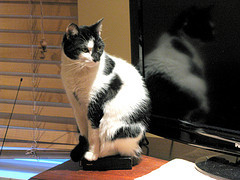Broadcasters Suddenly Notice That Cord-Cutters Exist, Freak Out
The media-analytics company Nielsen calls households that have no televisions hooked up to an antenna or cable connection “Zero-TV households.” There were two million of them in 2007, and now they estimate that there are about five million. Nielsen finally figured out that maybe they should start measuring what TV programs these people watch and how.
“As these homes change life stage, what will happen to them?” one Nielsen VP asked the Associated Press. Will they subscribe to Nickelodeon to pacify their toddlers, when they have them, or continue with their wacky Netflix-streaming ways?
As broadcasters meet for their annual conference in Vegas this week, they’re trying to figure out how to make money off these people. After all, it’s not the network that makes money when you stream “The Walking Dead” over Amazon.
Broadcasters worry about ‘Zero TV’ homes [AP]
Want more consumer news? Visit our parent organization, Consumer Reports, for the latest on scams, recalls, and other consumer issues.


